Disclosure: This post may contain affiliate links. I earn a small commission of product sales to keep this website going.
What is Fujifilm’s Color Chrome FX Blue, and when might you want to use it? I want to offer one good use for this setting, and that’s as an alternative to using a polarizing filter.
Watch the video:
About Polarizing Filters
A circular polarizing filter (CPL) is in just about every landscape and travel photographer’s basic kit.
But what does a polarizing filter do?
Rather than getting into the technical explanations, let me just compare them to polarized sunglasses. I’m sure everyone has experience with those!
When you put on polarized sunglasses, you notice that clouds in the sky become more pronounced, because the blues in the sky appear darker while the clouds remain brilliant white. It’s also easier to see through reflective surfaces, like water and glass. Colors in vegetation, like flowers, appear more vibrant.
All of these are reasons why photographers might use a polarizing filter. To get more contrast and color out of the photo. Thanks to the way a polarizing filter cuts out light traveling in a certain direction.
Disadvantages of Polarizing Filters
This post is going to focus strictly on how polarizing filters affect the sky. And that’s where most of the disadvantages are.
All polarizing filters on all lenses reduce light transmissivity and can produce color casts to some extent.
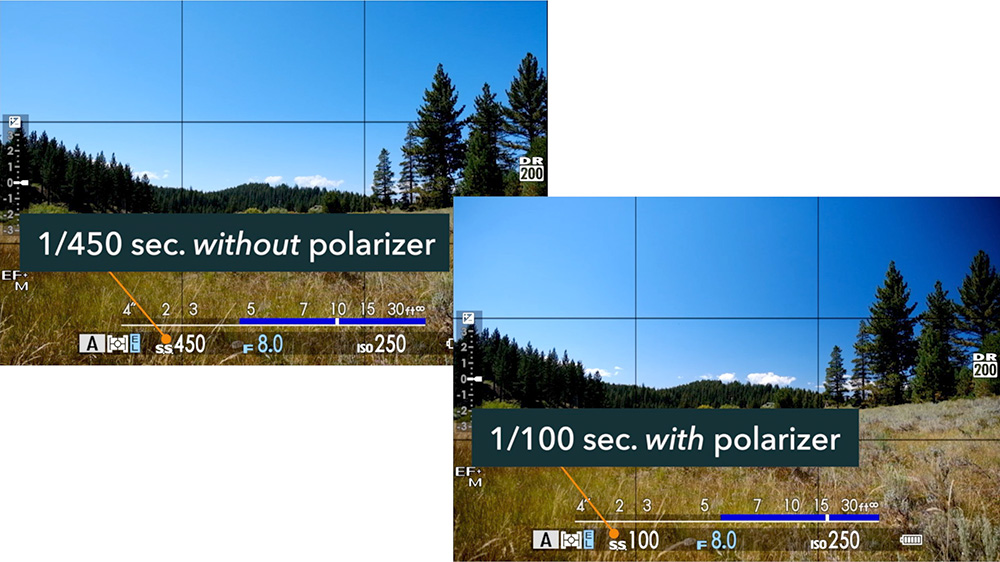
There are more disadvantages when using wide-angle lenses.
The first is vignetting. Polarizing filters can extend far enough in front of a wide-angle lens that they block the light around the edges, resulting in darker corners. The solution to this is slim filters made specifically for wide-angle lenses.
This is assuming your wide-angle lens can accommodate a threaded filter. In many wide-angle lenses, the front element extends beyond the barrel, and you can’t even put a polarizing filter on it. That’s the second big disadvantage of using polarizing filters on wide-angle lenses.
The third disadvantage is the variation of brightness in the sky. The maximum amount of polarization occurs at a 90-degree angle to the sun. If the sun is in front of you to the left, the sky will be the darkest on the right of the frame but light on the left.
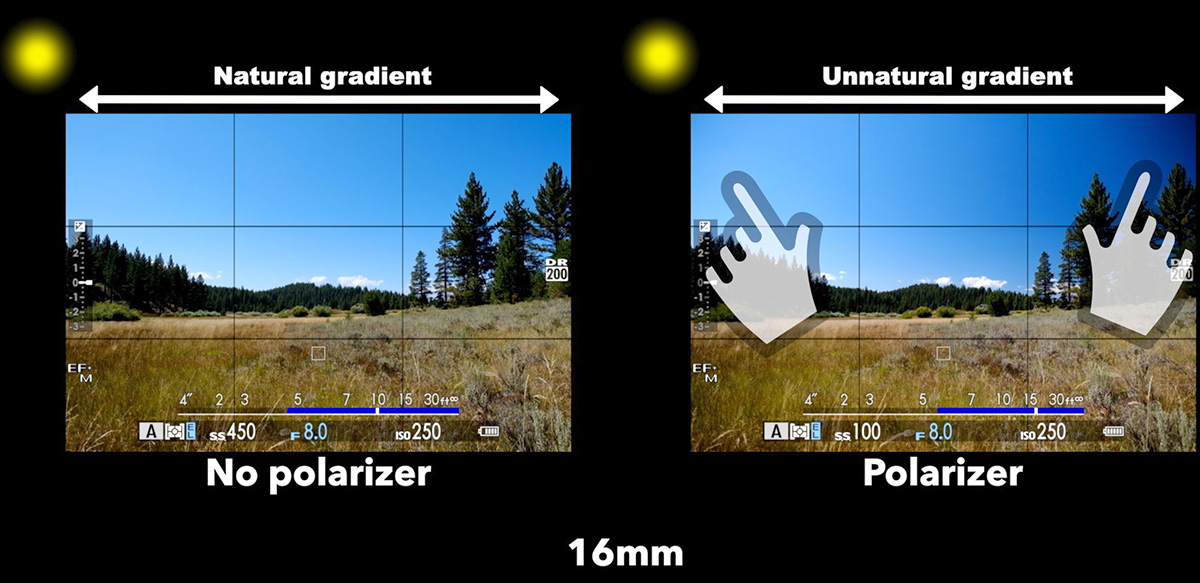
About Fujifilm Color Chrome FX Blue
Color Chrome FX Blue is an addition to the Color Chrome Effect settings found in newer Fujifilm X and GFX cameras. It works in the same way by lowering the luminance of blue colors and only blue colors – like sky.
This setting gives you two options other than Off – Weak and Strong. Experiment with the settings for the scene you’re photographing. Its effects will vary based on where the sun is, your exposure choices (bright or dark), and the Film Simulation being used.

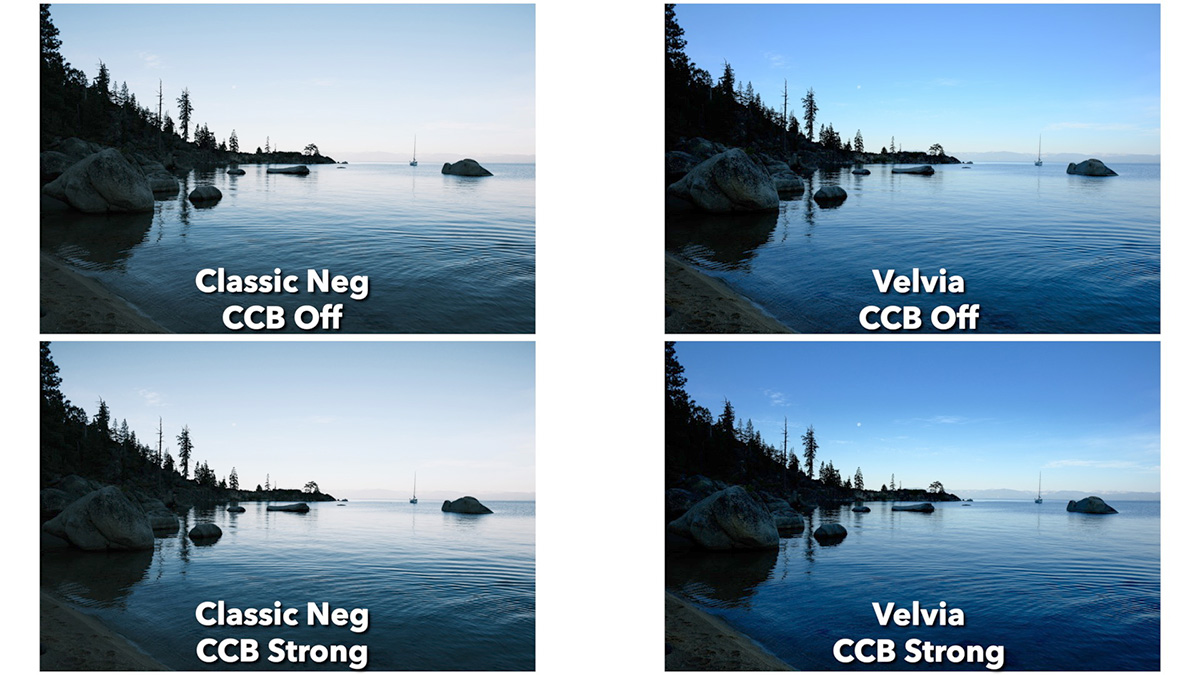
Where Color Chrome FX Blue is Better than Polarizers
As mentioned previously, a polarizing filter
- Restricts light
- Produces a color cast
- Can cause vignetting
- Can create unnatural gradients across your frame
None of these are a concern when using Color Chrome FX Blue because the light entering the lens is not altered in any way. The change is applied after capture, not during capture. The exception to this might be the gradient when the sun is just out of the frame; this setting might amplify existing gradients.
Your sky blues will deepen. Your clouds will stand out. Same as what happens with a polarizing filter, without the disadvantages.
Is Color Chrome FX Blue a replacement for your CPL?
Of course, if you’re trying to reduce glare on water, glass, or vegetation, this setting will not do anything about that. It will deepen the blues in water, which may or may not be what you want.
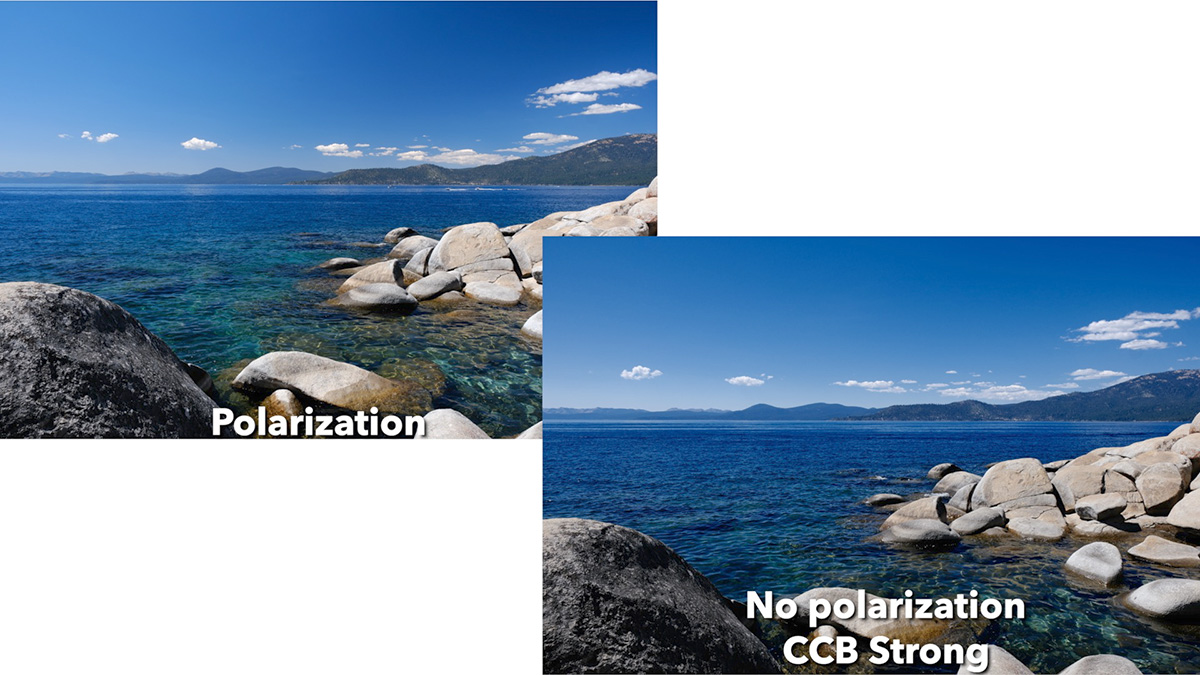
This setting is also mostly aimed at photographers trying to get the perfect in-camera JPEGs, though it does have some utility to RAW-only photographers. It will give you a preview of what you could do in post-processing when you pull down the luminance of blues in your RAW processor, which gives you the same effect but with more control.
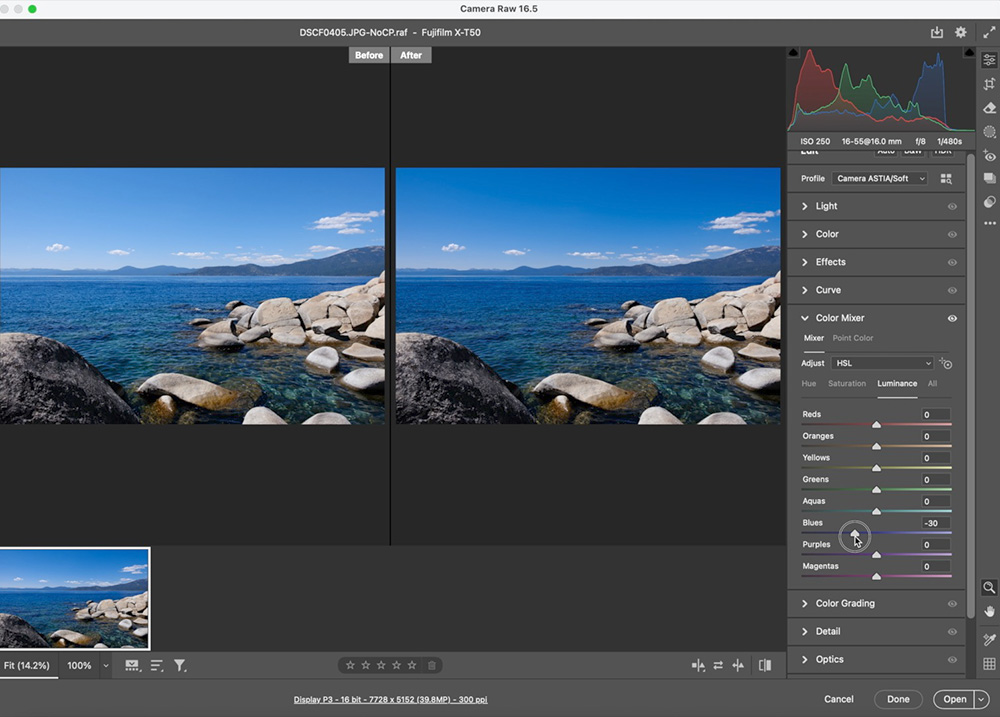
What’s the bottom line? If you don’t have a CPL, don’t have time to throw one on, or are using a wide-angle lens to get some spectacular sky views, try using the Color Chrome FX Blue setting. You might find that it gives you better results than that CPL and without the disadvantages.
